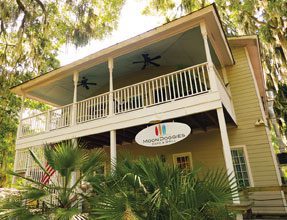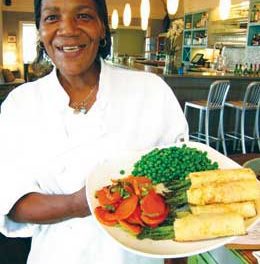Yesterday I was sitting in the shade under a majestic tree called an “Edible Chestnut Tree.” I was actually studying my notes from all the wineries. An elderly gentleman came up to me and introduced himself as Jim Maresh. ( Maresh is pronounced “Marsh.”)He is 85 years old and in superb physical condition. He is also the owner of the “Edible Chestnut Tree.” He allowed me to continue to use his shade. Jim was a co-worker and friend of David Lett, who is generally regarded as the leader in introducing Pinot Noir to the Willamette Valley. David’s Nickname was “Papa Pinot.” In the late sixties David Lett, Dick Erath, Dick Ponzi. and Charles Curry, along with Jim Maresh, were convinced that the pinot grape would survive very well in the Willamette Valley soil. The local farmers were of a different opinion and told our friends just named that the chance of the pinot grape surviving in the Willamette Valley was about as good as the chance of discovering oil in Connecticut. However, sheer determination – and the fact that David, an engineer by training, had done his research very carefully – would win in the end. David planted his Pinot Noir Grapes at a vineyard called “Eyrie” in 1966, and harvested his first Pinot Noir crop in 1970. His research and hard work had paid off and the rest is history. Soon thereafter, two more wineries opened; and today, 50 years later, there are close to 200 wineries in the Willamette Valley and several other wine growing areas.
In addition to the soil, there was another reason that the grapes did so well. Land that had little or no value to the traditional farmer – i.e. the steep hillsides – was ideal for wine grapes. Up until this time, the farmers had survived on crops grown on the flat surface of the valley floor. They had no use for the steep hillsides. Grape producers, however, found the steep hillsides ideal. The hillsides provided good air drainage and the roots of the vines were allowed to search for nourishment in the mineral rich volcanic soil.
It was made abundantly clear to me that the producers of Pinot Noir Wine, in the area that I was visiting, receive their fruit from three different venues. The producer can grow 100% of his own fruit, he can purchase 100% from an outside source, or he can do both. Those that purchase fruit on the outside, for whatever reason, usually do so through long term arrangements and contract acreage. The outside sources available to the wine producers are no less than excellent. The growers of grapes that are for sale went through the same exercise as David Lett, i.e. research the SOIL, and make a determination that this particular plot of land will or will not yield fruit that is suitable for wine production. One example of this practice is Shea Vineyards. Shea produces 140 acres of grapes. He sells 75% of his crop each year and keeps the remainder for his own wine production. The secret to his success, and that of other growers, is no secret at all. The growers have the soil. Add to this hard work, an EXPERIENCED year-round crew, and close attention to detail and the result is quality yield. As testament to the quality of the fruit that the wine producers purchase on the outside, sometimes the name of the source of the fruit appears on the label of the wine. For example, Panther Creek Winery will show 2008 Panther Creek Pinot Noir, Shea Vineyard.
Allow me to make one last point on this very long postcard. I met some terrific people at the wineries that I visited. During most conversations they always made an effort to mention the close knit community spirit that exists among the wineries and the employees. It is indeed a common denominator and positive force in the success of the wine industry for the area. One young man said to me, “Hey, why not? We are all in this together.” I think that says it all.
There is so much more that I want to cover. Oh well! That is a good excuse to go back to Oregon.
WINESPEAK
What is an AVA? AVA stands for American Viticultural Area. This designation is awarded to an area by the Bureau of Alcohol, Tobacco and Firearms. The AVA designation is the American substitute for the word Appelation. Should an area be awarded the AVA status, 85% of the grapes in the wine must be from that area. The designation states that the climate, soil, and elevation properties give the wine a certain characteristic. The Willamette Valley is one such designation.








